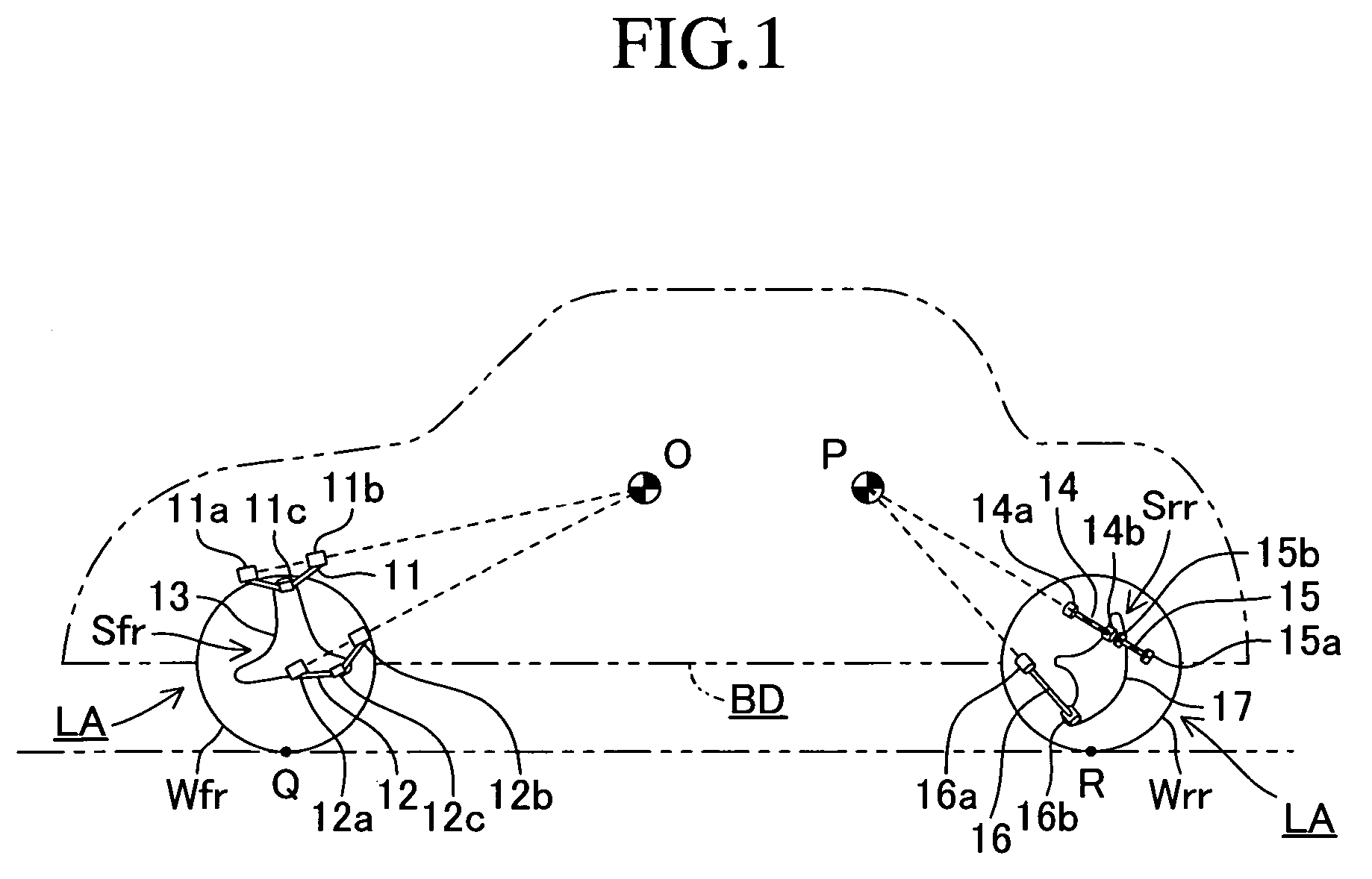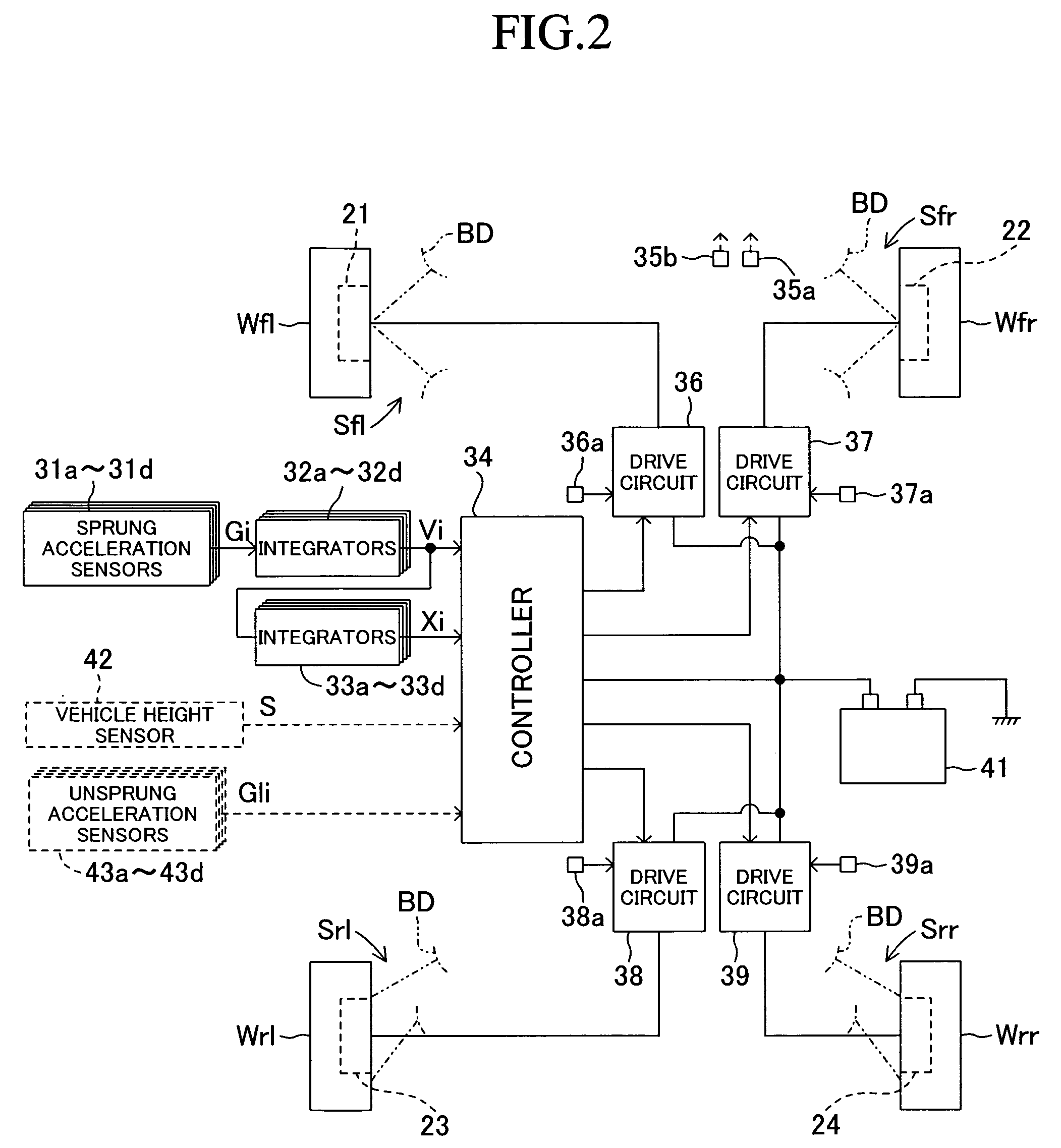Braking and drive force control apparatus for a vehicle
a technology of braking and driving force control and control apparatus, which is applied in the direction of non-deflectable wheel steering, process and machine control, electric devices, etc., can solve the problems of inadequate consideration of upward and downward vibration of the vehicle body, poor ride comfort, and insufficient consideration of the variations of the ground contact load of the wheels, so as to achieve the effect of running stability, maintaining ride comfort, and suppressing the variation of the ground contact load
- Summary
- Abstract
- Description
- Claims
- Application Information
AI Technical Summary
Benefits of technology
Problems solved by technology
Method used
Image
Examples
first embodiment
a. First Embodiment
[0023]Below, a braking and drive force control apparatus according to a first embodiment of the present invention will be described while referring to the drawings.FIG. 1 is a schematic side view showing the righthand portion of a vehicle.
[0024]The left and right, front and rear wheels Wfl, Wfr, Wrl, and Wrr of the vehicle are suspended on a vehicle body BD by suspensions Sfl, Sfr, Srl, and Srr (see FIG. 2). The suspensions Sfl, Sfr, Srl and Srr have the same structure on the left and right sides of the vehicle, so only the suspensions Sfr and Srr positioned on the right side of the vehicle will be explained in detail, and a detailed explanation of the suspensions Sfl and Srl positioned on the left side of the vehicle will be omitted.
[0025]The front suspension Sfr includes an upper arm 11 and a lower arm 12. The upper arm 11 is mounted on the vehicle body BD at its inner ends 11a and 11b for rotation about an axis extending in roughly the fore and aft direction of...
second embodiment
b. Second Embodiment
[0046]Next, a second embodiment of the present invention will be described. As shown by dashed lines in FIG. 2, a braking and drive force control apparatus for a vehicle according to this second embodiment has unsprung acceleration sensors 43a-43d instead of sprung acceleration sensors 31a-31d. The unsprung acceleration sensors 43a-43d are respectively mounted on the lower arms 12, 12, 16, and 16 of the suspensions for the left and right, front and rear wheels Wfl, Wfr, Wrl, and Wrr. They respectively sense the unsprung acceleration Gli (i=1−4) of the left and right, front and rear wheels Wfl, Wfr, Wrl, and Wrr in the upwards and downwards direction with respect to absolute space. A positive value for the unsprung acceleration Gli (i=1−4) indicates upwards acceleration, and a negative value indicates downwards acceleration. The unsprung acceleration sensors 43a-43d function as a wheel upwards and downwards vibration sensing means. A controller 34 according to thi...
PUM
 Login to View More
Login to View More Abstract
Description
Claims
Application Information
 Login to View More
Login to View More - R&D
- Intellectual Property
- Life Sciences
- Materials
- Tech Scout
- Unparalleled Data Quality
- Higher Quality Content
- 60% Fewer Hallucinations
Browse by: Latest US Patents, China's latest patents, Technical Efficacy Thesaurus, Application Domain, Technology Topic, Popular Technical Reports.
© 2025 PatSnap. All rights reserved.Legal|Privacy policy|Modern Slavery Act Transparency Statement|Sitemap|About US| Contact US: help@patsnap.com



